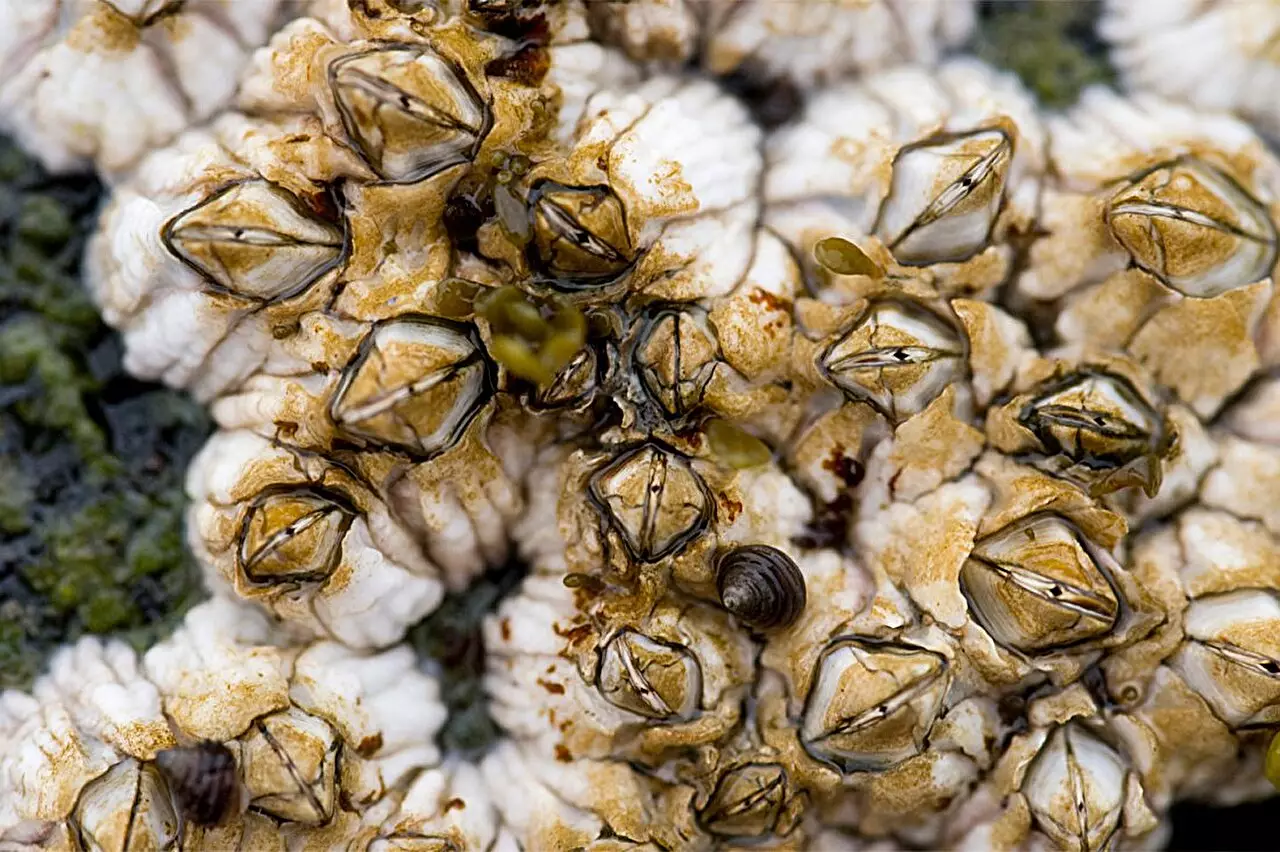The intricate relationship between barnacles and their rocky habitats has revealed fascinating insights that extend beyond marine biology. Recent studies indicate that these crustaceans utilize naturally occurring chemicals to cleanse surfaces of harmful bacteria before establishing their signature adhesive bonds. This behavior led bioengineering researchers, including Professor Abraham Joy from Northeastern University, to probe the potential of synthetic polymers for similar tasks—effectively using nature as a blueprint for innovative solutions in human health and industry.
The biological strategies employed by barnacles provoke an important question: Could synthetic materials mimic these natural processes to break down bacterial attachments in various environments? This question spurred Joy and his team to explore whether their designed polymer, which adheres effectively to wet surfaces, could disrupt bacterial biofilms. Their goal was not merely to kill bacteria; instead, they sought to weaken the physical adherence of biofilms, thereby facilitating their removal from a variety of surfaces, including human tissues and industrial piping.
Traditionally, medical treatments targeting bacterial infections have centered around antibiotics aimed at killing bacteria. However, their effectiveness is significantly diminished against biofilms, which are complex structures containing communities of microorganisms. Research indicates that an astonishing 60% to 80% of chronic wounds harbor biofilms, a factor that complicates treatment regimens. These dormant and resilient biofilm-associated bacteria often resist conventional antibiotics, leaving healthcare professionals grappling with persistent infections.
Joy’s research pivots this paradigm by emphasizing the disassembly of biofilms, akin to dismantling a house rather than confronting its inhabitants directly. By identifying that the polymer effectively dislodges biofilms housing the notoriously antibiotic-resistant bacterium Pseudomonas aeruginosa, the research opens up promising avenues for treating chronic wounds, particularly those resistant to conventional modalities.
The success of Joy’s polymer in biofilm removal has implications that stretch beyond the confines of medical applications. Industrial sectors face significant challenges due to bacterial biofilms—clogged pipes, compromised medical devices, and increased maintenance costs present persistent issues. By adapting the principles underlying the polymer’s action, industries could leverage this technology to clean and maintain systems vulnerable to biofouling.
Moreover, the potential for using these polymers in liquid form could revolutionize the way chronic wounds are treated. Once biofilms are removed, previously dormant bacteria can be exposed and become susceptible to traditional antibiotics—effectively reviving the antibiotic treatment’s potency. This therapeutic strategy could transform the management of chronic infections, paving the way for improved patient outcomes.
Despite the impressive results against Pseudomonas aeruginosa, the polymer’s effectiveness against other problematic bacteria, such as Staphylococcus aureus and E. coli, was less pronounced. The differing compositions of biofilms—carbohydrate-rich structures versus protein-dominated matrices—underscore the necessity for specialized approaches. Joy’s team is now focused on understanding the underlying mechanisms of interaction between the polymers and various biofilm components.
The researchers are optimistic about the prospect of tailoring polymers to target specific types of biofilms, potentially creating a suite of biofilm-remediation strategies. This targeted approach could not only streamline the process of addressing infections but also aid in the development of personalized medicine protocols where treatments are optimized for individual patients based on their bacterial profiles.
As Professor Joy articulates, the future of antibiotic development may hinge on an understanding of the physical and mechanical properties of biofilms. This perspective aligns with a growing recognition that antibiotics should not be solely evaluated on their ability to kill bacteria but also on their effectiveness in addressing the environments in which these bacteria thrive.
With ongoing research dedicated to refining polymer compositions and mechanisms of action, there is potential for groundbreaking advancements in both medical and industrial settings. As the scientific community grapples with the rising tide of antibiotic resistance, these studies illuminate a pathway forward—one that harnesses the wisdom of nature to forge innovative solutions in combating bacterial challenges.
Joy’s work exemplifies an inspiring convergence of biological insight and engineering innovation that could redefine our approach to bacterial infections in health care and beyond.


Leave a Reply